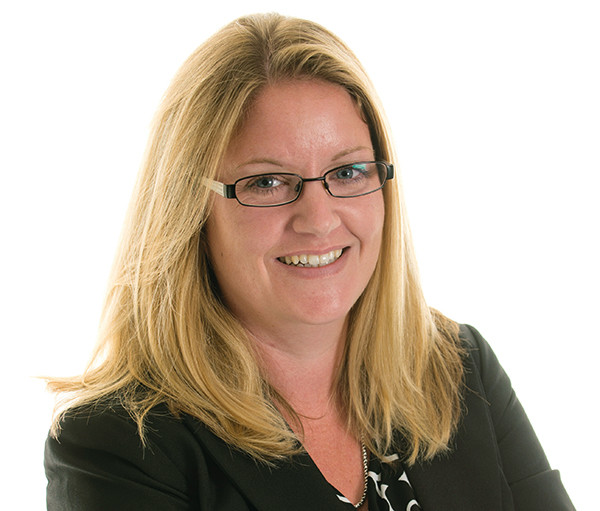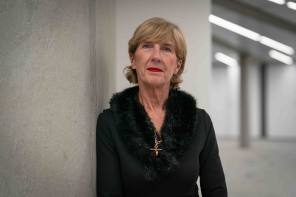

Despite an increased regulatory spotlight on self-invested personal pension and small self-administered scheme providers in recent months, Claire Trott believes the majority are doing the right thing.
As the first female chairman of the Association of Member-Directed Pension Schemes – the industry body representing Sipp and Ssas operators – Ms Trott knows what she’s talking about.
In addition to her role at Amps, she heads up pensions strategy at Technical Connection, a financial consultancy acquired by St James’s Place in 2016.
And it was towards the very technical end of pensions where her career began in 2001, as a maths graduate, reviewing defined benefit pension transfers for FPS Mark Lloyd.
She says: “Some people will think I’m quite cynical when I talk about DB transfers because I spent the first two years of my career checking and reviewing pensions that had been mis-sold.
“But that is how I learnt the industry, as well as how pensions work in depth; after you know what bad transfers look like, knowing what is good is slightly easier.”
In November 2005, Ms Trott left FPS Mark Lloyd to take on a technical team manager role at Suffolk Life, only a few months before pensions simplification came into force on April 6 2006.
She explains: “Suffolk Life wanted someone with occupational pension scheme experience; with A-day coming there was going to be a lot more overlap, so they wanted to bring in that knowledge across to the business.
“And when someone like John Moret offers you a job, it’s not something you turn down.”
Over the years, Ms Trott honed her technical pensions skills, eventually landing a role as director and head of pensions technical at Talbot and Muir in May 2015.
And it is her technical pensions experiences and knowledge that gives her an edge in her role as chairman of Amps.
She explains: “I don’t work for a firm that offers a Sipp or a Ssas, so I can look across everything objectively.
“Which is probably good for the committee – in the current market – to have a slightly independent chair.”
She adds: “It is sad to say, but the key challenge for Sipp and Ssas providers is actually bad publicity, despite most providers doing the right thing.”
Ms Trott explains: “What we have done is to try and ensure that we have people in the appropriate sub-committees, to ensure that their specialities in their areas are covering it.
She continues: “Different people do different things, but it all feeds in so that we don’t have one person trying to do everything and we are getting the right mix and the right specialties talking to the right people.”
Speaking about her role at Technical Connection, Ms Trott says the biggest challenge in pensions is still the tapered annual allowance and the resounding issues it is causing clients.
She explains: “This is the last year clients will be able to utilise and carry forward allowances that were £40,000.
“So there is a lot of focus on that, and making sure we have got all the appropriate calculators to check everything.”
She adds: “There is also a lot of focus on advice on pensions and we have very thorough compliance, that everything that’s done is checked, up-to-date and the guidance is appropriate.”
Another area that requires improvement is engagement.
She explains: “If you look into the Sipp and Ssas world, people engage, but in the pensions industry engagement is a key issue.
“So while the pensions dashboard will add some value for those who already engage with their pot, for those that don’t I worry it won’t make much difference.”
But it is not engagement alone that threatens the future success of the pensions dashboard.
She notes: “The costs surrounding implementing the pensions dashboard, for probably the majority of firms, may not equal the value the clients are getting and that is a concern because it is going to be expensive, and it is expected to be funded by industry.”
Ms Trott says transfers out of occupational pension schemes can be appropriate, but only if members receive good advice.
She says: “I think initial advice and ongoing advice is key to ensuring consumers understand what they are doing, where they are going and what they are putting in is appropriate; providers can only do so much.
“The same is true in the Sipp and Ssas world, this is where good advice makes all the difference; a good Sipp is an advised Sipp.”
While a lot of people choose Sipps, there are still too many who do not necessarily understand the pension rules, she says.
“Some providers will refuse to take excess contributions, some will assume they have calculated their carry forward, but the majority will at least ask.
“But if you don’t understand carry forward, and if you don’t understand the tapered annual allowance, you could end up with significant tax charges.
“So the key is to have good advice.”
Victoria Ticha is features writer at Financial Adviser and FTAdviser
Click here to watch FTAdviser's recent video interview with Claire Trott.



